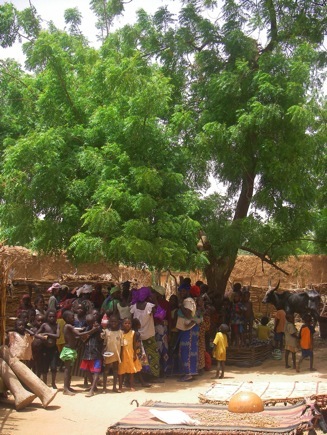This is what I do for a living...
















Neem seeds were field tested as a locally-produced, sustainable larvicide. During the 2007 monsoon (June – September), we regularly applied crushed neem seeds to malaria mosquito breeding pools in Banizoumbou, Niger. We continued to monitor mosquito abundance and hydrological conditions in the same manner as in the 2005 and 2006 monsoons to assess the impact of this intervention. In addition, we monitored mosquito abundance in the nearby village Zindarou for the same three years, but for control purposes did not apply neem during the 2007 season. Results show a statistically significant reduction of anopheles mosquito abundance using regularly-applied neem seeds in Banizoumbou, whereas this suppression of mosquito emergence was not witnessed in the control village Zindarou. Twice-weekly applications of neem seed powder to known breeding habitats of anopheline larvae in 2007 resulted in 49% fewer adult female Anopheles gambiae s.l. mosquitoes in Banizoumbou compared with previous captures under similar conditions. The results suggest that neem seeds can serve as a locally-produced, sustainable addition to integrated malaria control programs. More can be read about this project in Gianotti, et al 2008.



Mustafa Dafalla, an MIT undergraduate, applies crushed neem seeds to a breeding pool in Banizoumbou.
Clear suppression of adult anopheles mosquito abundance in the intervention year, 2007, compared to 2005 and 2006.
Ibrahim Arzika of CERMES, Niamey, demonstrating the pulverization of neem seeds, prior to application to mosquito breeding pools.
A neem tree in Banizoumbou. Originally imports from India, neem trees are prized for their shade and hardiness in the hot, dry African sahel environment and consequently have become ubiquitous in this region.